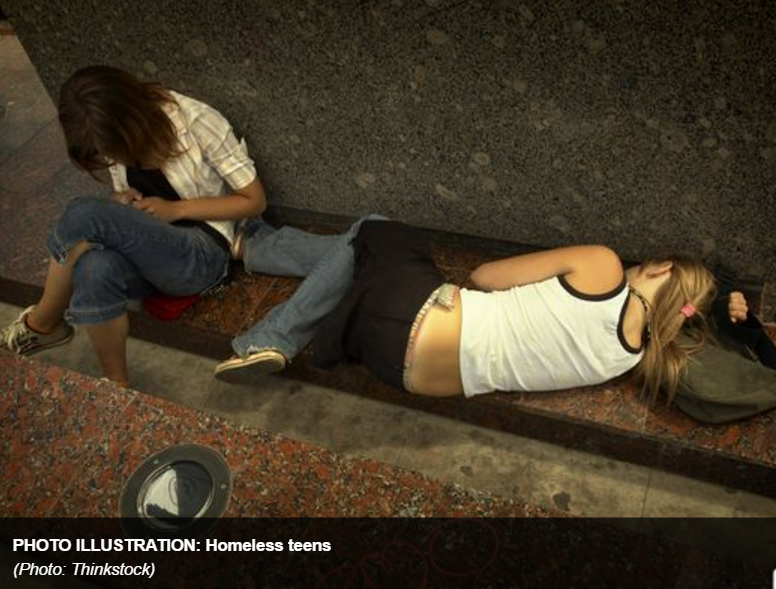Originally published on the Arizona Republic on September 4, 2016 By Michael Hughes.
My Turn: Child homelessness is a growing problem. Here’s what we’re doing to stop it.
They are called the hidden homeless.
Young outcasts who, through no fault of their own, have entered a world of motels, doubled-up quarters with relatives, a life on the streets or emergency shelter. When you look inside a classroom of students fresh from the summer break, you can’t imagine that some of them have no stable home.
These children and teens, 29,537 total, are enrolled in our public schools and many struggle daily, isolating from peers, missing class, repeating grades, and even dropping out of school entirely. The devastating impact of homelessness creates a wedge to social relationships and learning.
Arizona’s Department of Education reports a slight decline in student homelessness by three-quarters of 1 percent in its most recent report, but the latest count far dwarfs the pre-recession level of 19,122 children – an alarming longer-term trend.
The number of homeless youth is even higher when accounting for those not enrolled in school between the ages of 18 and 24 who are the “unaccompanied” homeless. The 2015 Arizona Point-In-Time initiative counted 621 unaccompanied youth who fled home from physical abuse, parental neglect and sexual violence.
Who are these kids?
They are neighbors. Grandchildren. Cousins. A child’s playmate. Most struggle with the consequences of poverty and lack of affordable housing in our state. They come from families that continue to flail financially even as the economy recovers from the housing collapse of 2009.
Fifty-one percent of children in Arizona are residing in low-income households – and the risks associated with child homelessness (low-wage jobs for parents, single parenting, economic disparity) are so prevalent in our state that the National Center on Family Homelessness ranks Arizona the worst for risk of child homelessness.
Our Valley’s non-profits, public and private funders and education leaders are working together to create a new future for homeless students: Building safe, affordable housing. Protecting homeless students’ right to education. And improving opportunities for parents’ education and employment to help families out of poverty.
For example, Arizona’s supply of housing to meet the needs of homeless children is growing – now at 563 units of emergency shelter and 940 units of transitional shelter. Additionally, a coalition of Valley non-profits and businesses, led by Valley of the Sun United Way, has set a goal of developing 1,000 units of permanent supportive housing, and we are nearly three quarters of the way to that target.
Why school stability matters
At the school level, the federal McKinney-Vento Homeless Education Assistance Act protects a student’s right to enroll in school even without a permanent address.
Every time children move, they fall farther behind; it takes children an average of 4-6 months to recover academically after changing schools, says advocacy group Solid Ground. That’s why Arizona’s local education agencies are making it a priority to keep children in the same school: partnering with local non-profits so that transportation is available and building alliances between parents and the Homeless Liaison in each district.
In the case where a student must change schools, new help is on the way: This October new federal guidelines will be put in place to make it possible for homeless students to get partial credits if they have to change schools. The goal is to make sure a child’s academic success is supported regardless of the family’s location of residence.
Still, the bridge to a better life for homeless children is their parents. Our three family shelters across the Valley – La Mesita Emergency Shelter, Faith House Women’s Center, and Autumn House – equip homeless parents with workplace skills training and job placement, along with financial literacy and techniques to achieve independence.
You can help stop this
A New Leaf’s program transforms residents’ financial lives. The building blocks – spending plans, short and long-term financial goals and stabilized income – keep parents moving toward self-sufficiency. Who benefits? Certainly, the parents, but most importantly, the children, who see what it takes to keep the family together and help them thrive.
You can help impact child homelessness in our Valley by supporting the work of organizations like A New Leaf, United Way and other non-profits working on the front lines. Your donations will help build affordable housing, provide advocacy for children and support parents with the critical skills and tools for lifelong independence.
Ending child homelessness in our city is possible. The time is right to make an investment for our future and help our most vulnerable families here at home.
Michael Hughes is CEO of A New Leaf, a Mesa non-profit human services organization, and has served as the president of the Arizona School Boards Association, the president of the Mesa Arts Academy and he is a board member of the Mesa United Way. Email him at mhughes@turnanewleaf.org; follow on Twitter, @anewleafaz.







